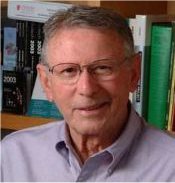Gibor Basri 2016
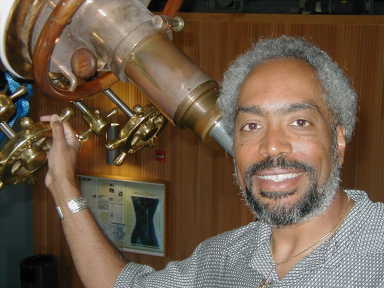 Gibor Basri is Professor of the Graduate School in the Astronomy Department of the University of California, Berkeley. He holds degrees in physics and astrophysics, including a PhD from the University of Colorado, Boulder.
Gibor Basri is Professor of the Graduate School in the Astronomy Department of the University of California, Berkeley. He holds degrees in physics and astrophysics, including a PhD from the University of Colorado, Boulder.
Basri has written over 200 technical papers, and has consistently reached out to the public to share his insights. He has appeared on PBS, NPR, the History Channel, and the Discovery Channel, and has given innumerable public lectures to local and national audiences. These include several prize lectures (e.g., the Shapley lecture and a Kavli Prize symposium lecture) and multiple appearances in several lecture series, including Sonoma State’s “What Physicists Do,” the Foothill College Astronomy Lecture Series, and the Linus Pauling Memorial Lectures.
Throughout his career, Basri has encouraged minorities to participate in science. In this regard, he earned UC Berkeley’s Chancellor’s Award for Advancing Institutional Excellence, and he became the founding Vice Chancellor for Equity and Inclusion. He has served on the Board of the Chabot Space and Science Center and now the Astronomical Society of the Pacific, and has given many talks promoting careers in science to underserved youth in the Bay Area.
Seth Shostak 2015
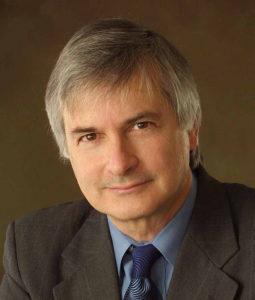 Seth Shostak, Senior Astronomer and Director, Center for SETI Research, SETI Institute, Mountain View, CA
Seth Shostak, Senior Astronomer and Director, Center for SETI Research, SETI Institute, Mountain View, CA
Dr. Shostak earned a BS in physics from Princeton and a PhD in astrophysics from Caltech. He has authored or co-authored a college textbook on astrobiology, four popular books on SETI, and 400 popular science articles — including regular contributions to both the Huffington Post and Discover Magazine blogs.
Seth has appeared on numerous television documentaries including Horizon, Naked Science, and The Universe. He has also appeared on The Colbert Report, and he has received the Klumpke-Roberts Award of the Astronomical Society of the Pacific for his “outstanding contributions to the public understand and appreciation of astronomy.” Seth gives many dozens of talks annually, and is the host of the SETI Institute’s weekly science radio show, Big Picture Science.
Donald Kennedy 2010
 In nominating Donald Kennedy for the Sagan Prize, legendary S.F. Chronicle science editor—and Wonderfest advisor—David Perlman wrote the following:
In nominating Donald Kennedy for the Sagan Prize, legendary S.F. Chronicle science editor—and Wonderfest advisor—David Perlman wrote the following:
“From the time he talked with reporters about the neurophysiology of crayfish and octopuses in 1974, to his recent press discussion at AAAS meetings on the subject of science communication, Don Kennedy has been a major guide and influence on the public understanding of science.
I can also recall a public series of summer programs on environment issues that he created and ran at Stanford when he was a mere professor. They raised public awareness of environmental problems years before “environmentalism” and “green” became catchwords.
As Commissioner of the FDA for more than two years during the Carter administration, 1977-79, and despite continual heavy lobbying by and food additives industries, Kennedy ran an agency that still protects the public strongly on many fronts (even though many FDA operations are still flawed today—either because of direct lobbying or Congressional reluctance to increase its powers).
During his tenure as editor of Science, of course, he greatly broadened the audience for that magazine by encouraging more staff-writtten articles that covered the ground of the often highly technical papers. These articles then became completely accessible to lay readers and extremely helpful to journalists, again communicating to the public. He’s done much the same thing in discussion with reporters time and again at AAAS meetings, too.”
Geoff Marcy 2009
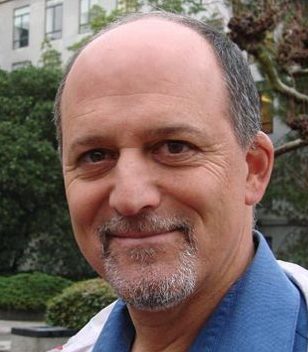 Geoffrey W. Marcy (born September 29, 1954) has discovered more extrasolar planets than anyone else on Earth. He and his colleagues, R. Paul Butler and Debra Fischer, discovered 70 out of the first 100 exoplanets. Marcy also confirmed Michel Mayor and Didier Queloz’s discovery of the first extrasolar planet 51 Pegasi b. Other achievements have included discovering the first multiple planet system around a star similar to our own (Upsilon Andromedae), the first transiting planet around another star (HD209458b), the first extrasolar planet orbiting beyond 5 AU (55 Cancri d), and the first Neptune-sized planets (Gliese 436b and 55 Cancri e).
Geoffrey W. Marcy (born September 29, 1954) has discovered more extrasolar planets than anyone else on Earth. He and his colleagues, R. Paul Butler and Debra Fischer, discovered 70 out of the first 100 exoplanets. Marcy also confirmed Michel Mayor and Didier Queloz’s discovery of the first extrasolar planet 51 Pegasi b. Other achievements have included discovering the first multiple planet system around a star similar to our own (Upsilon Andromedae), the first transiting planet around another star (HD209458b), the first extrasolar planet orbiting beyond 5 AU (55 Cancri d), and the first Neptune-sized planets (Gliese 436b and 55 Cancri e).
In 2005, Marcy and Michel Mayor received the $1 million Shaw Prize in astronomy for their work. Marcy has not (yet!) said that winning Wonderfest’s $5000 Sagan Prize means more to him. Give him time.
Throughout his professional life, Marcy has been eager to share his team’s discoveries with the public. David Perlman, senior science editor of the San Francisco Chronicle, has turned to Marcy for decades to get fresh insights into astronomy research. “Geoff has always worked very hard to make his work and that of others in the field clearly comprehensible to general audiences,” says Perlman. Marcy is a regular figure in the science cafés of the San Francisco Bay Area. Best of all, he has twice electrified audiences at Wonderfest.
Robert Sapolsky 2008
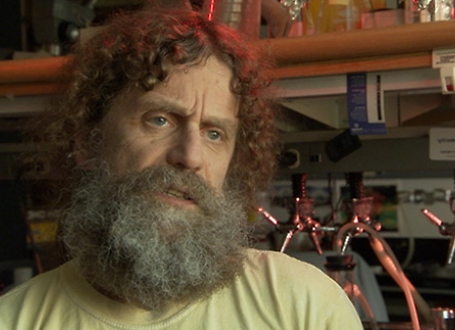 Robert Sapolsky received his B.A. in biological anthropology summa cum laude from Harvard University and subsequently attended Rockefeller University where he received his Ph.D. in Neuroendocrinology, working in the lab of Bruce McEwen, a world-renowned endocrinologist. He is currently a professor at Stanford University, holding joint appointments in several departments, including Biological Sciences, Neurology & Neurological Sciences, and Neurosurgery.
Robert Sapolsky received his B.A. in biological anthropology summa cum laude from Harvard University and subsequently attended Rockefeller University where he received his Ph.D. in Neuroendocrinology, working in the lab of Bruce McEwen, a world-renowned endocrinologist. He is currently a professor at Stanford University, holding joint appointments in several departments, including Biological Sciences, Neurology & Neurological Sciences, and Neurosurgery.
Career
Sapolsky, a neuroendocrinologist, has focused his research on issues of stress and neuron degeneration, as well as on the possibilities of gene therapy strategies for help in protecting susceptible neurons from disease. Currently, he is working on gene transfer techniques to strengthen neurons against the disabling effects of glucocorticoids. Sapolsky also spends time annually in Kenya studying a population of wild baboons in order to identify the sources of stress of their environment, and the relationship between personality and patterns of stress-related disease in these animals. More specifically, Sapolsky studies the cortisol levels between the Alpha male and female and the subordinates to determine stress level.
He is the author of Why Zebras Don’t Get Ulcers: An Updated Guide to Stress, Stress-Related Diseases and Coping (1994), which explores the effects of prolonged stress and its contribution to damaging physical and mental afflictions. His other books include, The Trouble with Testosterone: And Other Essays on the Biology of the Human Predicament (1997), Junk Food Monkeys (1997), A Primate’s Memoir (2002) and Monkeyluv: And Other Essays on Our Lives as Animals (2005).
Honors
Sapolsky has received numerous honors and awards for his work, including the prestigious MacArthur Fellowship genius grant in 1987, an Alfred P. Sloan Fellowship, and the Klingenstein Fellowship in Neuroscience.
The UK hardcore band Johnny Truant have a song named after Sapolsky on their debut full-length album The Repercussions of a Badly Planned Suicide.
Keith Devlin 2007
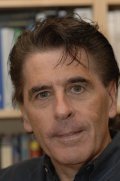
Dr. Keith Devlin is a Senior Researcher at CSLI and its Executive Director, a Consulting Professor in the Department of Mathematics, and a co-founder of the Stanford Media X research network and of the university’s H-STAR institute. He is a World Economic Forum Fellow and a Fellow of the American Association for the Advancement of Science. His current research is focused on the use of different media to teach and communicate mathematics to diverse audiences. He also works on the design of information/reasoning systems for intelligence analysis. Other research interests include: theory of information, models of reasoning, applications of mathematical techniques in the study of communication, and mathematical cognition. He has written 26 books and over 75 published research articles. Winner of the 2001 Communications Award of the Joint Policy Board for Mathematics, the 2003 Peano Prize, the 2005 Pythagoras Prize, and the 2007 Carl Sagan Award. He is “the Math Guy” on National Public Radio.
Paul Berg 2006
 Research Interests
Research Interests
For about 10 years until 2000, my lab’s research activities were focused on the mechanism of recombinational repair of double-strand breaks in DNA. We focused our efforts on two model systems: one involved the repair of restriction enzyme cleavages at specific mammalian chromosomal loci and the second explored the biochemical properties of purified yeast Rad51 protein, an essential catalyst for synapsing the broken ends of DNA with an intact homologue of that sequence. We also explored the roles of Rad52 and PRA (single-strand DNA binding protein) in the repair process.In 2000, I became Emeritus Professor in Biochemistry and stepped down from the Directorship of the Beckman Center. Much of my activities since then have been involved in writing a biography of the genetics pioneer George Beadle, published in 2003, plus articles for other publications elaborating on Beadle’s legacy for today’s science. Over the years I have been and continue to be an activist in public policy issues affecting biomedical issues, e.g. recombinant DNA and more recently, issues concerning embryonic stem cells. Selected Publications
- Saxonov S, Berg P, Brutlag DL “A genome-wide analysis of CpG dinucleotides in the human genome distinguishes two distinct classes of promoters.” Proc Natl Acad Sci U S A 2006;
- Berg, P, “Brilliant Science, Dark Politics, Uncertain Law” Jurimetrics 2006; 46
- Berg P, “Origins of the human genome project: why sequence the human genome when 96% of it is junk?” Am J Hum Genet 2006; 79: 4: 603-5
- Berg P, “Reflections on the Lasker prize for basic biomedical research.” JAMA 2005; 294: 11: 1419-20
- Berg,P., Singer, M. “George Beadle: From Genes to Proteins” Nature Reviews Genetics 2005; January
Jill Tarter 2005
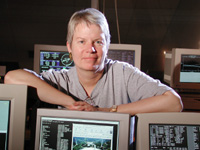
Bernard M. Oliver Chair for SETI Research
Director, Center for SETI Research
Jill Tarter holds the Bernard M. Oliver Chair for SETI (Search for Extraterrestrial Intelligence) and is Director of the Center for SETI Research at the SETI Institute in Mountain View, California. Tarter received her Bachelor of Engineering Physics Degree with Distinction from Cornell University and her Master’s Degree and a Ph.D. in Astronomy from the University of California, Berkeley. She served as Project Scientist for NASA’s SETI program, the High Resolution Microwave Survey, and has conducted numerous observational programs at radio observatories worldwide. Since the termination of funding for NASA’s SETI program in 1993, she has served in a leadership role to secure private funding to continue the exploratory science. Currently, she serves on the management board for the Allen Telescope Array, a joint project between the SETI Institute and the UC Berkeley Radio Astronomy Laboratory. When this innovative array of 350 6-m antennas begins operations at the UC’s Hat Creek Radio Observatory, it will simultaneously survey the radio universe for known and unexpected sources of astrophysical emissions, and speed up the search for radio emissions from other distant technologies by orders of magnitude.
Tarter’s work has brought her wide recognition in the scientific community, including the Lifetime Achievement Award from Women in Aerospace, two Public Service Medals from NASA, Chabot Observatory’s Person of the Year award (1997), Women of Achievement Award in the Science and Technology category by the Women’s Fund and the San Jose Mercury News (1998), and the Tesla Award of Technology at the Telluride Tech Festival (2001). She was elected an AAAS Fellow in 2002 and a California Academy of Sciences Fellow in 2003. In 2004 Time Magazine named her one of the Time 100 most influential people in the world, and in 2005 Tarter was awarded the Carl Sagan Prize for Science Popularization at Wonderfest, the biannual San Francisco Bay Area Festival of Science.
Tarter is deeply involved in the education of future citizens and scientists. In addition to her scientific leadership at NASA and SETI Institute, Tarter has been the Principal Investigator for two curriculum development projects funded by NSF, NASA, and others. The first, the Life in the Universe series, created 6 science teaching guides for grades 3-9 (published 1994-96). Her second project, Voyages Through Time, is an integrated high school science curriculum on the fundamental theme of evolution in six modules: Cosmic Evolution, Planetary Evolution, Origin of Life, Evolution of Life, Hominid Evolution and Evolution of Technology (published 2003). Tarter is a frequent speaker for science teacher meetings and at museums and science centers, bringing her commitment to science and education to both teachers and the public. Many people are now familiar with her work as portrayed by Jodie Foster in the movie Contact.
A book about Dr. Tarter for young readers:
Looking for Life in the Universe In Looking for Life in the Universe, author Ellen Jackson and photographer Nic Bishop introduce readers to Dr. Jill Tarter and her thrilling, rigorous, and awe-inspiring work in the field of SETI.
Alex Filippenko 2004

Alex Filippenko received his bachelor’s degree in Physics (1979) from the University of California, Santa Barbara, and his doctorate in Astronomy (1984) from the California Institute of Technology. He subsequently became a Miller Postdoctoral Fellow at the University of California, Berkeley. In 1986 he joined the faculty at UC Berkeley, where he has remained through the present time. A member of the International Astronomical Union, he has served as President of the Astronomical Society of the Pacific and as Councilor of the American Astronomical Society.
An observational astronomer who makes frequent use of the Hubble Space Telescope and the Keck 10-meter telescopes, Filippenko’s primary areas of research are exploding stars (supernovas), active galaxies, black holes, gamma-ray bursts, and the expansion of the Universe. He and his collaborators recognized a new class of exploding star, obtained some of the best evidence for the existence of small black holes in our Milky Way Galaxy, and found that other galaxies commonly show vigorous activity in their centers that suggests the presence of supermassive black holes. His robotic telescope at Lick Observatory is the world’s most successful search engine for nearby exploding stars, having discovered nearly 400 of them in the past few years. He also made major contributions to the discovery that the expansion rate of the Universe is speeding up with time (“the accelerating Universe”), driven by a mysterious form of dark energy — the top “Science Breakthrough of 1998,” according to the editors of Science magazine.
Filippenko’s research accomplishments, documented in over 430 published papers, have been recognized with several major awards, including the Newton Lacy Pierce Prize of the American Astronomical Society (1992) and the Robert M. Petrie Prize of the Canadian Astronomical Society (1997). He is one of the world’s most highly cited astronomers. A Fellow of the California Academy of Sciences, he has also been a Guggenheim Foundation Fellow (2001), a Phi Beta Kappa Visiting Scholar (2002), and a distinguished visiting lecturer at numerous colleges and universities, including the Spitzer Lecturer at Princeton University.
A dedicated and enthusiastic instructor, Filippenko has won the two most coveted teaching awards at UC Berkeley, each of which is generally given at most once per career. Also, in 1995, 2001, 2003, and 2004 he was voted the “Best Professor” on campus in informal student polls. He has delivered hundreds of public lectures on astronomy, and he has played a prominent role in science newscasts and television documentaries such as “Mysteries of Deep Space,” “Stephen Hawking’s Universe,” and Nova’s “Runaway Universe.” With Jay M. Pasachoff, he coauthored an award-winning introductory astronomy textbook, “The Cosmos: Astronomy in the New Millennium” (2001; 2004, second edition). In 1998 he produced a 40-lecture introductory astronomy video course with The Teaching Company, and in 2003 he taped a 16-lecture update on recent astronomical discoveries. Filippenko has twice wowed audiences as a speaker at Wonderfest, the Bay Area Festival of Science.Besides being an avid tennis player and hiker, he enjoys world travel and is addicted to total solar eclipses, having seen 7 of them. A science enthusiast for as long as he can remember, Filippenko’s passion for astronomy began at age 14, when he accidentally “discovered” Saturn while viewing stars through a small telescope he received from his parents.
Kevin Padian 2003
The Wonderfest Advisory Board and Prize Selection Committee is pleased to announce that Kevin Padian has been selected to be the 2003 recipient of the Carl Sagan Prize for Science Popularization.
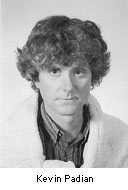 Kevin Padian taught in public schools in New York State in the 1970s, then earned a Ph.D. from Yale University in 1980. He is a Professor in the Department of Integrative Biology at the University of California at Berkeley and Curator of the UC Berkeley’s Museum of Paleontology. His specialties include the origin of dinosaurs, the origin of major evolutionary adaptations, how pterosaurs moved and lived, and the structure and shape of dinosaur bones.
Kevin Padian taught in public schools in New York State in the 1970s, then earned a Ph.D. from Yale University in 1980. He is a Professor in the Department of Integrative Biology at the University of California at Berkeley and Curator of the UC Berkeley’s Museum of Paleontology. His specialties include the origin of dinosaurs, the origin of major evolutionary adaptations, how pterosaurs moved and lived, and the structure and shape of dinosaur bones.
Kevin Padian is an exemplary scientist. He is well-known in his field as an authority on bird evolution and also the evolution of early amphibians. But it is his work to increase the public understanding of science that earns him this award. He has done this in two ways: through popularizing his professional work, and also through herculean efforts to improve the quality of science education.
Kevin has made substantial contributions to the public understanding of science in his professional field of paleontology. He is the author of several articles in popular publications such as Scientific American, Discover, and National Geographic (he’s in last May’s National Geographic with his Laborador dogs, in fact!), and of course, NCSE Reports. His vita indicates over 130 publications in popular and semi-popular sources on scientific topics in his area of expertise.
As president of NCSE he has worked to improve the public understanding of evolution in many ways: writing articles, answering questions, and appearing in public on our behalf. He also has been an ambassador to fellow members of the scientific community, encouraging them to, like him, invest time in improving science education. The importance of such efforts of a leading scientist should not be underestimated. It is vitally important that the scientific community become involved in the public understanding of science – which I know are goals included among those of Wonderfest.
But it is Kevin’s contributions to science education where I believe his efforts have been especially important. Kevin has invested uncalculable amounts of time working for the improvement of science education nationally and in California specifically. During the early 1990s he served on the committee that developed and wrote the California Science Education Framework, considered at the time to be a model for the rest of the nation. In fact, the scientists and teachers who developed the National Science Education Standards in the mid 1990s worked closely with the California team; there was much cross fertilization of ideas that even today are shaping educational policy across the nation. Kevin was part of the critique and consensus component of the development of the NSES and worked effectively to make the NSES a strong and effective document.Kevin also served on several ad hoc California educational committees, appointed by former Superintendent of Education, Bill Honig, including curriculum development and textbook approval. In all of these efforts, Kevin has stressed the primacy of science content over all other issues, an argument he can make with authority given his stature in the scientific community.
He has also given generously of his time to teachers, having been invited by the National Science Teacher Association, the National Association of Biology Teachers, and the California Science Teacher Association to present lectures and workshops at their annual meetings. Kevin was instrumental in making the National Council on the Teaching of Evolution, held in Berkeley in the fall of 2000, a success. He has also participated in many teacher education sessions at the California Academy of Sciences, the UC Museum of Paleontology, and through science teacher outreach of professional associations such as the Geological Society of America, the Paleontological Society, the Society for the Study of Evolution, and others. He has consulted with the very effective program for elementary school teachers, the California Science Implementation Network, as well as with the Lawrence Hall of Science educational materials developers. I have been honored to share the stage with him on many occasions, and I am continually awed by his ability to connect with teachers and help them understand the big ideas.
— Eugenie C. Scott,Wonderfest Advisory Board Member
Andy Fraknoi 2002
 The Wonderfest Advisory Board and Prize Selection Committee is pleased to announce that Andrew Fraknoi has been selected to be the 2002 recipient of the Carl Sagan Prize for Science Popularization.
The Wonderfest Advisory Board and Prize Selection Committee is pleased to announce that Andrew Fraknoi has been selected to be the 2002 recipient of the Carl Sagan Prize for Science Popularization.
Andrew Fraknoi is the Chair of the Astronomy Department at Foothill College and Educational Consultant for the Astronomical Society of the Pacific Before coming to Foothill in 1992, he served as the Society’s Executive Director for 14 years and was the editor of its popular-level astronomy magazine, Mercury.Fraknoi is author or coauthor of 14 books on astronomy and astronomy education, including The Planets and The Universe, two collections of astronomy and science fiction published by Bantam Books. He is the lead author of Voyages through the Universe, a major college-level textbook published by Harcourt College Publishing in 1996 and again in 2000, which has now become one of the leading astronomy texts in the U.S. He has also edited two collections of K-12 teaching resources, called “The Universe at Your Fingertips” and “More Universe at Your Fingertips”, published through the Astronomical Society of the Pacific. Radio listeners know him as a regular guest on local and national radio programs, explaining astronomical developments in everyday language. In Northern California, he appeared for over 20 years on the Jim Eason Show on KGO or KSFO radio and is now a regular guest on both the Pete Wilson Show on KGO and Michael Krasny’s Forum Program on KQED. Nationally, he has been heard regularly on Science Friday and Weekend All Things Considered on National Public Radio.He has given over 400 public lectures on topics ranging from the death of stars to the origin of the universe. Fraknoi serves on the Board of Directors of the Search for Extraterresrial Intelligence Institute, which administers Project Phoenix, a scientific program to identify possible radio signals from civilizations around other stars. He is also a Fellow of the Committee for the Scientific Investigation of Claims of the Paranormal (CSICOP), specializing in debunking astrology. Fraknoi has a strong interest in helping to improve the way science is taught in the nations’s schools. For 20 summers he has organized and led the Universe in the Classroom workshops on teaching astronomy ingrades 3-12 through universities from Boston to Hawaii. He is the director of Project ASTRO, a program to bring volunteer astronomers into 4th through 9th grade classrooms on an ongoing basis, that now operates in 11 regional sites around the country.He was educated at Harvard and the University of California at Berkeley, and has taught astronomy and physics at San Francisco State University, City College of San Francisco, Canada College, and the College of San Mateo, as well as the University of California Extension Division.In 1994, he received the Annenberg Foundation Prize of the American Astronomical Society (the highest honor in the field of astronomy education) and the Klumpke-Roberts Prize of the Astronomical Society of the Pacific (given for a lifetime of contributions to popularizing astronomy.) Find out more about Andy Fraknoi…

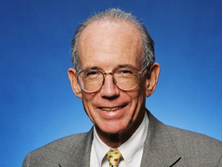 In nominating Donald Kennedy for the Sagan Prize, legendary S.F. Chronicle science editor—and Wonderfest advisor—David Perlman wrote the following:
In nominating Donald Kennedy for the Sagan Prize, legendary S.F. Chronicle science editor—and Wonderfest advisor—David Perlman wrote the following: